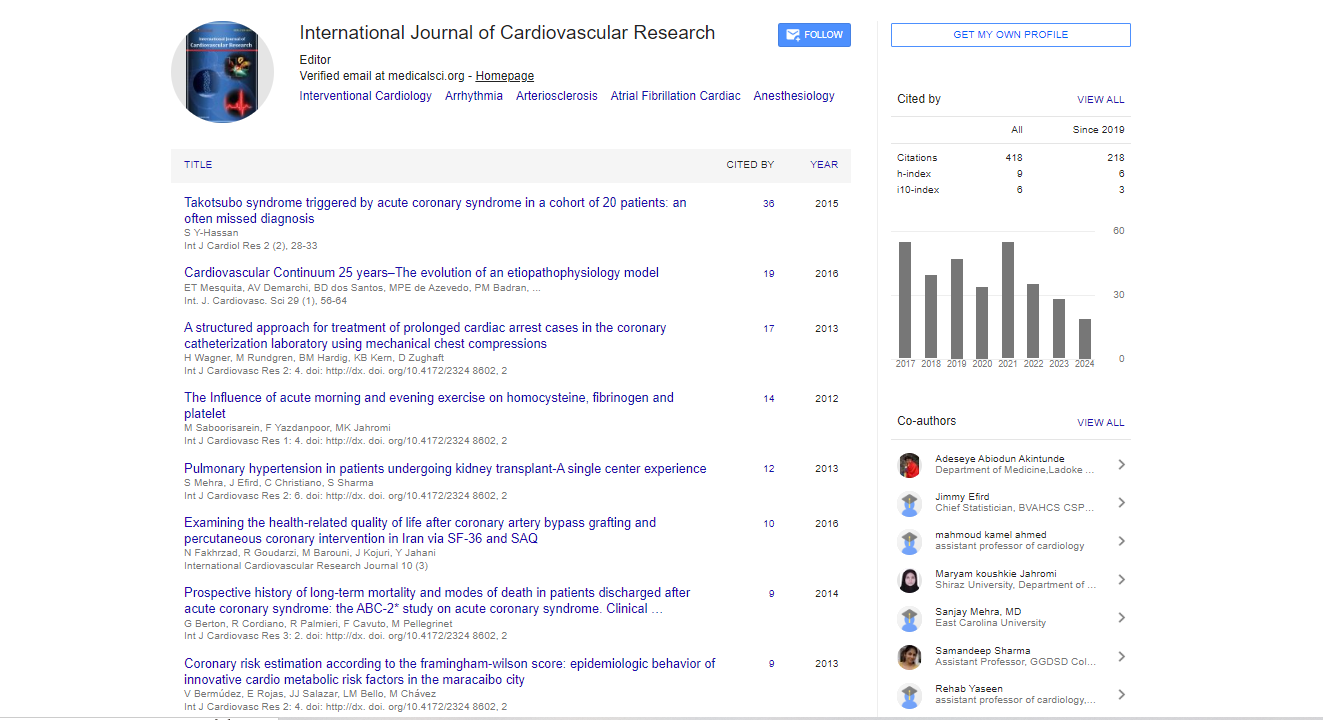Research Article, Int J Cardiovasc Res Vol: 2 Issue: 2
The Novel Development of an Experimental Model of Dihydropyridine Calcium Channel Blocker Poisoning using Intravenous Amlodipine
| David Jang1*, Sean Donovan2, Theodore Bania2, Lewis Nelson3, Robert Hoffman3 and Jason Chu4 | |
| 1New York University School of Medicine, USA | |
| 2Department of Emergency Medicine St. Luke’s-Roosevelt Hospital Center, USA | |
| 3Department of Emergency Medicine New York University School of Medicine Bellevue Hospital Center New York, New York, USA | |
| Corresponding author : David Jang Assistant Professor, New York University School of Medicine, USA E-mail: Jangd01@nyumc.org |
|
| Received: February 28, 2013 Accepted: March 04, 2013 Published: March 29, 2013 | |
| Citation: Jang D, Donovan S, Bania T, Nelson L, Hoffman R, et al. (2013) The Novel Development of an Experimental Model of Dihydropyridine Calcium Channel Blocker Poisoning using Intravenous Amlodipine. Int J Cardiovasc Res 2:2. doi:10.4172/2324-8602.1000121 |
Abstract
The Novel Development of an Experimental Model of Dihydropyridine Calcium Channel Blocker Poisoning using Intravenous Amlodipine
Cardiovascular drug poisoning remains a leading cause of fatality. Within this class, calcium channel blockers(CCBs) account for the majority of deaths. CCBs are typically categorized as dihydropyridines (i.e. amlodipine or nifedipine) versus the non-dihydropyridine (i.e. verapamil and diltiazem) which are the most potent and once considered the CCB type responsible for all CCB-related deaths. Most recently, dihydropyridine deaths have increased. While there are established models of nondihydropyridine poisoning there currently are no established experimental models of dihydropyridine poisoning.
 Spanish
Spanish  Chinese
Chinese  Russian
Russian  German
German  French
French  Japanese
Japanese  Portuguese
Portuguese  Hindi
Hindi 



